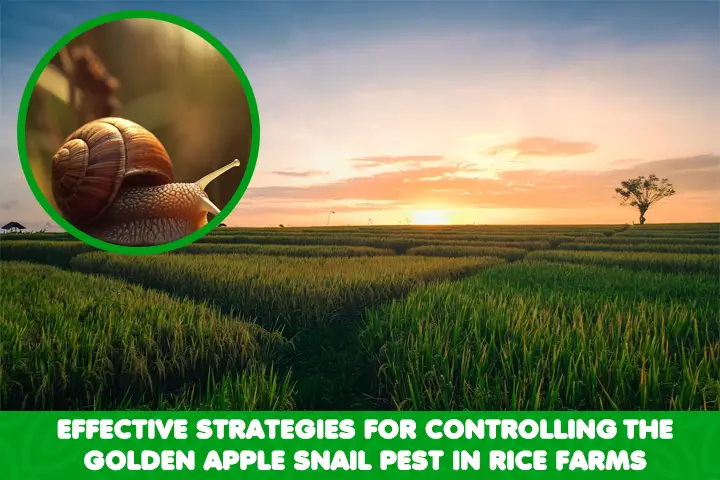
The Golden Apple Snail (Pomacea canaliculata), with its striking golden shell, may seem innocuous at first glance, but this invasive pest can become a formidable adversary for rice farmers. Originating from South America, the Golden Apple Snail has managed to spread to various parts of the world, particularly in Asia, where it has become a major concern for rice cultivation. Its voracious appetite for rice seedlings and young plants poses a significant threat to rice production and can lead to devastating losses if not effectively managed.
Controlling the Golden Apple Snail on a rice farm requires a multi-faceted approach that combines both traditional and modern pest management techniques. From manual removal to the careful use of organic and chemical pesticides, farmers must employ a range of strategies to safeguard their crops and ensure sustainable rice production.
- Manual Removal: A Hands-On Approach
The first line of defense against the Golden Apple Snail is the farmer’s watchful eye and nimble fingers. During early morning or late afternoon, when snails are most active, farmers can patrol the rice paddies and manually collect and remove the snails. Wearing gloves, they can carefully handpick the snails and either crush them or collect them in a container for disposal. While this method may be labor-intensive, it can be effective in managing small populations of snails, especially when combined with other control methods.
- Biological Control: Let Nature Take its Course
Nature provides its own solutions to pest management, and in the case of the Golden Apple Snail, introducing natural predators can help keep their population in check. Certain fish species, such as the Chinese trapdoor snail (Cipangopaludina chinensis) and some freshwater pufferfish, feed on Golden Apple Snails. Farmers can consider introducing these beneficial organisms to their rice paddies to control the snail population. However, careful consideration and monitoring are necessary to ensure that introduced species do not become invasive themselves, disrupting the ecological balance.
- Use of Barriers: Keeping Snails at Bay
Constructing physical barriers around rice paddies is another effective method to prevent the entry of Golden Apple Snails into the fields. Farmers can build walls or fences using materials like plastic, wood, or bamboo to create a protective barrier. Alternatively, placing mesh nets or screens around the paddies can deter snails from accessing the rice plants. Proper installation and maintenance of these barriers are crucial for their effectiveness.
- Farm Management Practices: Creating Unfavorable Conditions
Implementing good farm management practices can reduce the attractiveness of rice fields to Golden Apple Snails. Proper water management is critical, including controlling water levels and ensuring uniform irrigation. Snails thrive in stagnant water, so ensuring a continuous flow of water can make the environment less favorable for them. Additionally, avoiding over-fertilization and excessive use of organic matter, which can attract snails, is important.
- Organic Pesticides: Balancing Efficacy and Environmental Safety
Organic pesticides offer an environmentally friendly alternative to chemical pesticides. One such pesticide is Biograde 300 SL, a biodegradable solution that specifically targets snails while having minimal impact on other beneficial organisms in the rice paddies. When using organic pesticides, farmers must follow label instructions meticulously, including proper application rates and timing.
- Chemical Pesticides (as a Last Resort): Tread with Caution
While chemical pesticides should be considered as a last resort due to their potential negative impacts on the environment and non-target organisms, they can be effective in severe infestations. If considering the use of chemical pesticides, farmers must exercise caution and adhere strictly to recommended dosages and application methods. It is essential to wear appropriate protective gear and avoid contamination of water sources and non-target areas.
Controlling the Golden Apple Snail pest on a rice farm demands a well-rounded and proactive approach. By integrating various methods, such as manual removal, biological control, the use of barriers, and proper farm management practices, farmers can prevent snail infestations from spiraling out of control. Organic pesticides offer an eco-friendly solution, while chemical pesticides should only be used with great care and as a last resort. With a combination of effective strategies, rice farmers can protect their crops, ensure sustainable rice production, and safeguard their livelihoods against the threat of the Golden Apple Snail.
Stay updated with the latest farming tips and agriculture industry news from Africa by subscribing to our newsletter. Don’t miss out on valuable insights and updates. Follow us on Twitter, LinkedIn, and Facebook to join our farming community and stay connected with us.



















